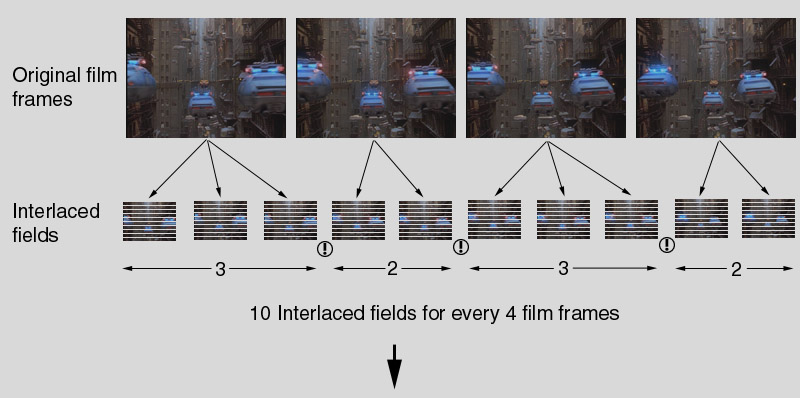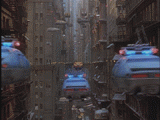Quote:
Originally Posted by ObiTrentKenobi

Hello,
could someone here please explain 3:2 pulldown for me. I've tried reading up on it all over, but I'd like to hear a fresh and realistic layman's version of the technology.
Do I want it, or don't I want it on my HDTV?
Is it an alternative to having true 24p playback?
Does it create a distorted picture?
Does it create flicker?
THEN; tell me how it would help or hurt an HDTV with these specs:
42" LCD 1080p, 60hz, 3:2 pulldown, 2000:1 native contrast, 450cd/m2 brightness, 3-D Y/C comb filter.
|
I will TRY to keep this as simple as I can, but, as anyone who knows me can attest, I rarely achieve that. So, please don't hesitate to let me know if I've failed to actually simplify.
1) What is it?
3:2 pulldown, generally speaking, is the process by which 24 fps sources are converted for 60 fps viewing. As the name hints at, you achieve a 3:2 cadence, since 24 does not multiply properly into 60. So, if each number below is a frame, frames 1 to 4 look something like this:
1,1,1,
2,
2,3,3,3,
4,
4
So, the first frame is repeated 3 times, then the second is repeated twice, and so on so forth.
2) Do I want it, or don't I want it on my HDTV?
This is a tricky question. Without 3:2 pulldown, sets that cannot display an image at 24 fps would have no way of showing these images. Keep in mind that most sources capable of producing 24 fps sources will not do so unless the set can display it, but essentially, 3:2 pulldown is required, mainly for 24 fps sources.
Also keep in mind that HDTV's are not the only devices that can enable 3:2 pulldown; all blu-ray players outputting 24 fps discs at 60 fps have performed 3:2 pulldown themselves. Further, some AVR, video decoders, and pre/pro's also have the ability to perform 3:2 pulldown themselves.
3) Is it an alternative to having true 24p playback?
As mentionned above, 3:2 pulldown is how one achieves a 60fps cadence for displays that do not supports 24fps. So, it is an alternative for displaying 24 fps blu-ray discs on 60 fps televisions.
4) Does it create a distorted picture?
That depends on your definition of distorted, and on how sensitive your eyes are. The uneven cadence (3:2) creates what is referred to as motion judder, because every other image is presented 1.5 times as long as the other. However, most people will not perceive this, and some people have grown accustomed to the judder, given that 3:2 pulldown has been standard for far longer than 24 fps has been available to the masses.
5) Does it create flicker?
Directly, no. As mentioned above, it is the cause of motion judder, which is perceivable to some people, but not the majority.
6) How does it help or hurt your HDTV?
As mentioned above, your HDTV is only capable of playing material at 60fps. So, the 3:2 pulldown ensures that any 24 fps material that makes it to your HDTV is transformed into 60 fps so that it can be displayed, as opposed to displaying a message telling you that the material cannot be displayed at all. In your case, it can be essential.
Hope that answers all the questions, and rather simply, as you requested. If not, feel free to let me know, either here, or through PM. Also, if anyone has any information to expand on what I've said, feel free to provide it, and educate even me!



























 Linear Mode
Linear Mode

